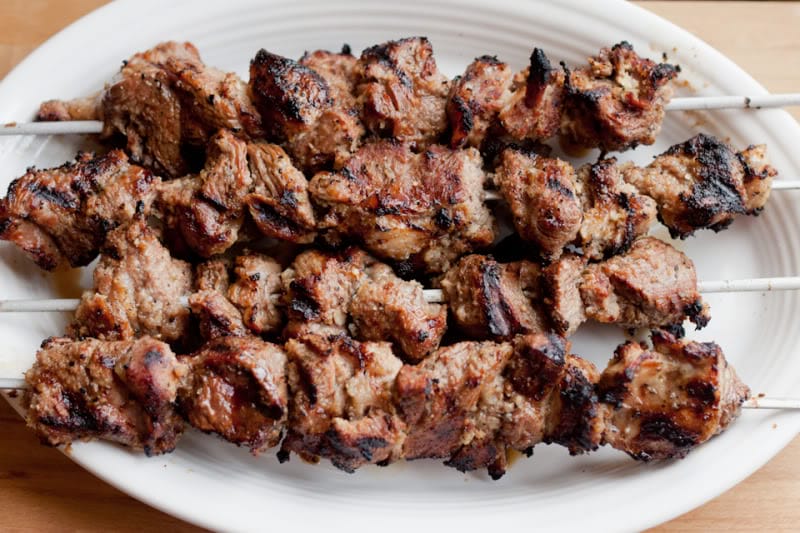Russia has a rich history and culture with firm traditions and inspiring arts, particularly when it comes to literature, ballet, architecture, cinema and animation, just to name a few of the areas that have come to shape the modern nation. Russian cuisine, however, makes no exception and although only a few dishes have reached international renown, one would find that the land home to 150 million people has plenty to offer when it comes to putting hearty and diverse food on the table.
The abundance of delightful appetizers is a distinctive characteristic in the Russian cuisine, which sits at the very heart of the country’s hospitality. As a guest in a typical Russian home, one would be received with a wide variety of appetizers like Russian Eggs (hard boiled eggs with a spicy filling of pickles), Mushroom Caviar, Eggplant Puree, Beetroot Salad or the famous Matryoshka (Babushka) eggs, a culinary symbol of Russia.
Most Russian dishes are inspired by the vast land and climate, with typically rich and hearty meals, abundant in potato, meat and sour cream but French influences and sophistication have also made their way on Russian tables, particularly in larger cities and modern restaurants.

One of the most recognizable classic Russian dishes is the, a thick beetroot and cabbage soup often served with meat, potato and plenty of sour cream. In many areas of the country, this belly-warming dish is considered the pride of Russian cooking and every household or restaurant would typically have their own secret recipe, passed down from generation to generation.

Another instantly recognizable staple of Russian cuisine is the Russian Salad, a dish that has gained international notoriety particularly in Southern Europe where it’s mainly served as a tapa. Authentic Russian Salad is a delicious salad plate made of potatoes, peas, carrots, eggs, pickles and ham with a mayonnaise dressing. This famous dish can be found in menus as Olivier salad particularly around Moscow, named after Lucien Olivier, the chef behind the secret recipe created in Russia in the mid-1800s.

Russian pancakes are the country’s version of the French Crepes and a key dish on most of the Moscovian menus. With fillings ranging from smoked salmon to jams or more traditionally, cottage cheese, these delicious pancakes are a must when visiting Russia.

Marinated or smoked fish is abundant in Russian cuisine, with salmon, herring and sturgeon being the most popular choices. A particularly renowned fish dish is the Shuba, a layered salad made of pickled herring, eggs, beets carrots and potatoes with a dressing of either mayonnaise or sour cream. This dish also goes by the name of Russian Herring Under Fur Coat.

Russia’s pies, called Pirozhki, are circular or rectangular baked buns with a sweet or savoury filling. The name originates from the word pir, which means banquet or festivity. They make for great appetizers but can also be found as street food or in bakeries. Pirozhki are often described by Russians as a “truly national good”. Similar to Pirozhki, Russian dumplings are a dough-based dish, usually packed with meat or mushroom fillings and can be served either in a broth or as a standalone dish.

At social gatherings, the roasted meat on skewers called Shashlik is a staple dish. Shashlik is a shish-kebab dish brought to Russia in the 19th century. In modern cuisine, it’s a popular summer food usually cooked under open fire but can also be found as street food in large cities.

Another highly popular meal that has gained notoriety outside of Russia is the classic Beef Stroganoff or Beef Stroganov, a warm dish of sautéed beef served in a sour cream sauce with its origins in the mid 19th but by now popular around the world. The name is presumably derived from a member of the large and affluent Stroganov family.

Last but not least, there is a known tradition in Russia that when important guests come into a home, they are greeted with bread and salt. Bread is an important staple which represents a warm welcome and hospitality. Salt on the other side, as an inexpensive commodity, is usually given as a sign of friendship. The feeling of “motherland” is often associated with the taste of rye bread.
Despite today’s international notoriety of Chinese or Italian cuisines, Russia’s history of expansions during the 16th and 18th century has made it one of the most refined food countries in the world and cities like Moscow or St. Petersburg are now considered capitals of fine dining. However, with an abundant variety, most traditional Russian dishes are as delicious from street food markets as they are from top restaurants.




